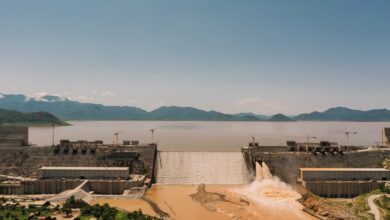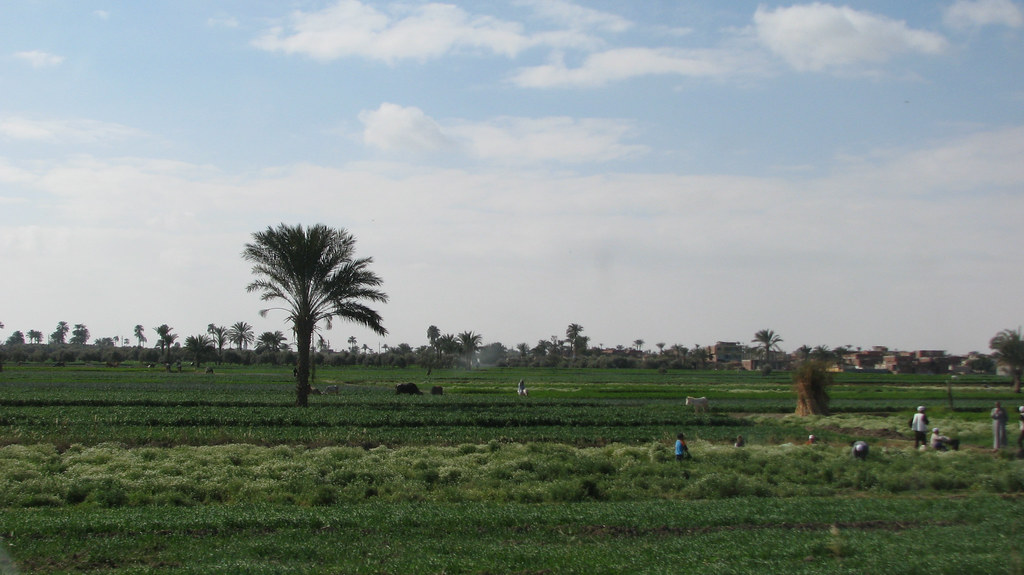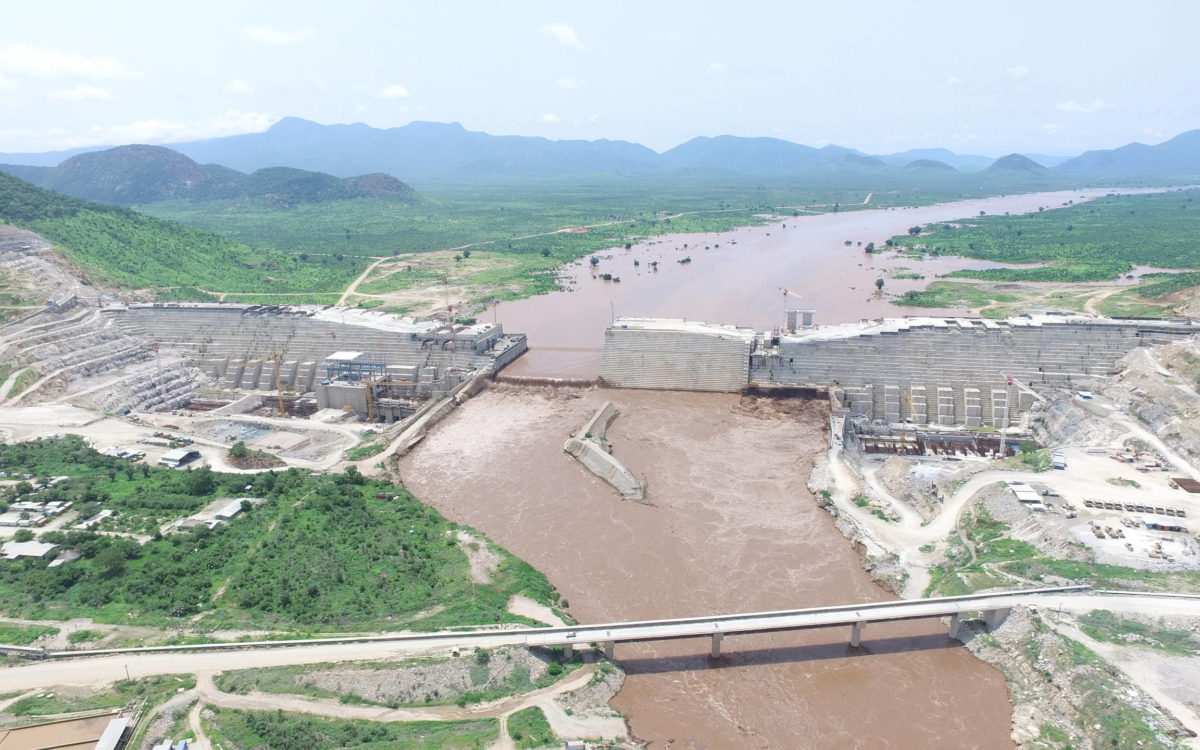Al-Masry Al-Youm has obtained excerpts of a Water Resources Ministry draft strategy to face expected water shortages until the year 2050.
The draft lays emphasis on the fact that "there is no hope for an increased share of Nile water to Egypt," meaning it is imperative that Egypt "rely on its current share of water, which is approximately 55.5 billion cubic meters annually."
Accordingly, there will be more reliance on decentralization with greater participation by investors in the development process. This will entail the transfer of a number of public water institutions to the private sector. The new strategy will be completely dependent upon the development of internal water resources.
Informed sources that requested anonymity said the new strategy would be presented to Prime Minister Ahmed Nazif and later to President Hosni Mubarak for approval.
The draft strategy drew attention to the Ministry of Irrigation's admission of the "impossibility" of establishing new projects that would lead to an increase in Egypt's share of Nile water. The draft also pinpoints the primary obstacles to water resource development in Egypt, including political, technical and environmental constraints.
According to the draft, political constraints "concern the political situation in the Nile Basin States and the strength of Egypt-Nile Basin State relations and their impact on both proposed and ongoing joint projects to increase Egypt's share of Nile water." This includes "the political situation in countries involved in the Nubian aquifer, including Libya, Chad and Sudan."
As for technical constraints, the draft stressed the importance of improving the skills and expertise of those involved in water services in order to meet the needs of the upcoming phase. Anticipated technological developments include the use of technology for the provision of non-conventional water development and irrigation methods, the utilization of low-quality water and harvest rain, as well as seawater desalination.
The new strategy takes into consideration problems such as Nile pollution, canal and drain waters containing raw sewage, industrial and agricultural waste, and constant groundwater seepage. Additional environmental setbacks mentioned included global warming, rising sea levels, deforestation, desertification, acid rain, biodiversity, and the growing of edible crops for biofuels.
According to the draft, "There is no doubt that these constraints require that focus be placed on improving water management by developing short-, medium- and long-term national policies and strategies." This, according to the draft, cannot be achieved unless these policies are placed within a comprehensive framework that takes coordination between the concerned bodies and institutions into consideration.
The draft proposes the "continuation of regional cooperation between Egypt and Nile Basin States and the ensuring of Egypt's right to Nile water." It also proposes the consideration of external alternatives in the development of external water resources, while stressing the importance of a reliance on the development of internal water resources.
The draft reviewed possible future scenarios for Egypt's water resources management, including "expected," "pessimistic" and "optimistic" scenarios. All three scenarios were based on population growth, as well as on indicators of the potential impact of climate change, including temperature and sea level changes and changes in the quantity of Nile water to reach Lake Nasser.
According to the draft, the "expected" scenario is based on the anticipated condition of Egypt's water resources by the year 2050, according to current population growth rates and expected developments based on history and experience.
The expected population growth rate is 1.8 percent, with a predicted population of 158 million. The anticipated climate change includes a 1.4°C increase in temperatures and a 26 cm rise in sea levels. In this scenario, there is an expected annual decrease of 0.1 billion cubic meters in Lake Nasser.
In the "pessimistic" scenario, the predicted population growth rate is 2 percent, with an expected population of 172.5 million and a predicted temperature change of 1.7°C, along with a 40 cm rise in sea levels. In such a scenario, the expected decrease in Lake Nasser would be 1.9 billion cubic meters annually.
As for the "optimistic" scenario, no changes in Lake Nasser water levels are predicted. Here, a population growth rate of 1.62 percent is forecast, with a population of 146.4 million. The predicted temperature change is 1.1°C with a 5 cm rise in sea level.
In the case of the "expected" scenario, the draft emphasized the importance of bringing an end to Nile water supplies of industrial clusters located outside the Nile Valley, such as the Gulf of Suez and East Port Said. It also stressed the importance of gradually increasing reliance on non-Nile water resources, such as desalination of brackish groundwater, by the industrial sector and the obliging of new industries to re-use water and utilize seawater for cooling purposes.
The draft also refers to the prospect of allowing private-sector participation in investment opportunities, such as ensuring water supply to industrial clusters and industrial waste treatment plants. The draft also predicts an increase in industrial water service charges and encourages the expansion of industries that rely on agricultural crops that do not require large amounts of water.
The draft predicts the "expected" scenario's water resources and water needs in the year 2050 to be made up of Nile water at an amount of 55.4 billion cubic meters; groundwater at an amount of 12 billion cubic meters (8 billion cubic meters from the Nile valley and Delta shallow reservoirs and 4 billion cubic meters from the deep reservoir); 18.5 million cubic meters of recycled waste water from the agricultural, industrial and health sectors; 1.5 billion cubic meters of rain and flood waters; and 1.75 million cubic meters of desalinated water. This comes to a total of a total 89.15 billion cubic meters of water.
Water needs in the year 2050 were broken down as follows: 14.2 billion cubic meters of drinking water; 6 billion cubic meters for industry; 68 billion cubic meters for agriculture; and 2.5 billion cubic meters of evaporation loss, amounting to a total of 90.3 billion cubic meters.
Due to the potential secession of southern Sudan and political instability in some Basin States, it is predicted that work on the first phase of the Jonglei Canal will come to a stop. It is also expected that the negative impact of climate change will result in an approximate annual decrease of 1.9 billion cubic meters of water to Lake Nasser. This will lead to a 53.6 billion cubic meter annual decrease in Nile water.
In this scenario, the draft goes on to predict higher unemployment rates, low water-use efficiency by various sectors, cultivation of low economic return crops and high rates of urban sprawl. It also predicts a continuation of the pollution of watercourses, which would limit the recycling of waste water from the agricultural and health sectors.
As for the "pessimistic" scenario, desalination of seawater is seen as the main solution for bridging the gap between available water resources and future needs. In this scenario, focus is placed on reducing desalination costs and relying on alternative sources of energy, such as solar and nuclear energy.
Translated from the Arabic Edition.



